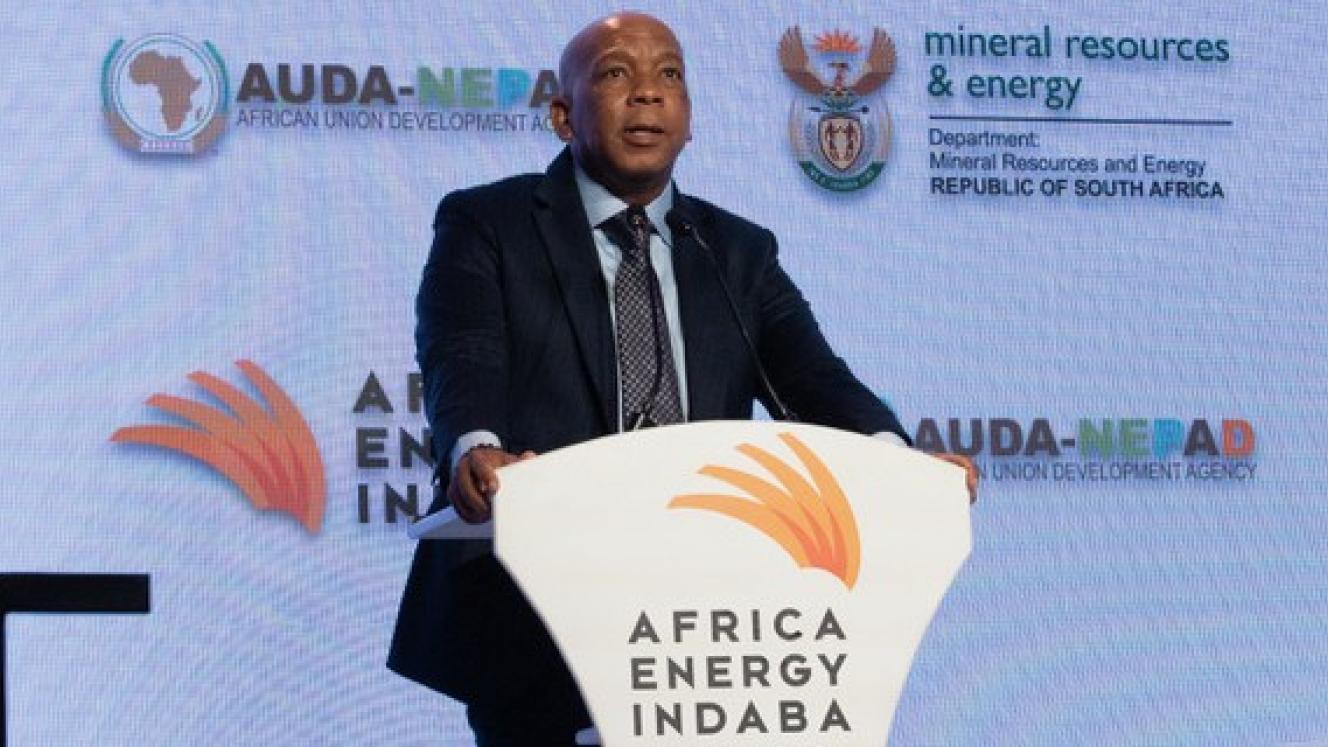Africa needs a radical overhaul of global financing structures to address its energy crisis as inadequate investment threatens the continent’s economic future.
South Africa’s Minister of Electricity and Energy Dr Kgosientsho Ramokgopa delivered this warning at the Africa Energy Indaba in Cape Town today (March 4).
Ramokgopa stressed the need to modernise and expand Africa’s electricity grids to enable regional integration and a single electricity market. “In South Africa alone, we need about R440 billion to realise this ambition yet our sovereign balance sheet is weak and Eskom’s financial position has deteriorated. We must design financial instruments that facilitate the scale of investment required.” Other African countries likely require even greater capital, he said.
Africa could generate 310 GW of solar and 59 GW of wind power by 2040 if investments materialise, he added.
South Africa is pursuing a diversified energy mix but the pace of renewable adoption depends on grid expansion. Studies indicate that oil and gas use in Africa will double by 2050. “While we acknowledge our environmental responsibilities, we must also leverage our resources responsibly to broaden the industrial base and drive economic development,” Ramokgopa said.
As the world’s sixth-largest coal producer, South Africa faces unique transition challenges. “Coal is not incompatible with our transition commitment. The shift will occur at a pace and scale that ensures energy security, economic stability and job creation,” Ramokgopa said.
Unequal flow of capital
Ramokgopa criticised the unequal flow of global capital, arguing that restrictive trade and finance policies stifle Africa’s energy transition. “Africa holds 60% of the world’s best solar resources but has installed just 1% of global solar capacity,” he said, highlighting the disconnect between resource availability and access to development finance.
The continent’s share of global energy investment remains below 5%. “Industrialisation in Africa is hindered by frequent power outages costing economies 25% of GDP annually. No investor will commit to an environment where electricity supply is unreliable,” said Ramokgopa.
He called for the removal of restrictive financial instruments in favour of tailored solutions that enable higher investment levels. “Achieving universal energy access by 2063 – a key objective of the African Union’s Agenda 2063 – demands a bold, coordinated financing strategy that includes significant private-sector participation as many African governments lack the fiscal capacity to support the scale of investment required,” he said.
Financing Africa’s energy future
With energy demand expected to triple by 2040, Ramokgopa urged reforms to lower borrowing costs and make climate finance affordable. “Developing nations face exorbitant borrowing costs due to perceived risks that do not reflect their economic realities but rather outdated and biased credit ratings. We need aggressive reforms to de-risk investments through guarantee schemes, blended finance structures and enhanced concessionality.”
He also stressed the need to expand fiscal space. “The crippling debt burdens carried by developing countries undermine their ability to invest in development, climate resilience and clean energy transitions. Meaningful debt restructuring and innovative financial instruments must be central to global discussions.” South Africa will raise these concerns at the G20 Summit.
The G20 Energy Technical Working Group has agreed on three priorities:
- Energy security
- Affordability
- Reliable access
“As Cabinet, we view this as Africa’s G20 and must use this platform to advance the continent's interests. This is a moment of profound geopolitical and economic significance. Brazil and South Africa, as the outgoing and current G20 presidencies, have a rare opportunity to shape the global climate finance agenda,” Ramokgopa said.
Streamlining development finance
Ramokgopa identified fragmented development and climate finance as a barrier to progress. “The dispersion of funding across multiple institutions – multilateral development banks, development finance institutions and vertical climate funds – creates inefficiencies that limit impact. We must push for harmonised financial structures aligned with national strategies ensuring predictable, scalable and structured finance flows.”
He emphasised the role of national development banks in mobilising capital and called for increased private-sector investment. “Governments must create an enabling environment with strong regulatory frameworks, clear policy direction and investment-ready project pipelines,” he said.













